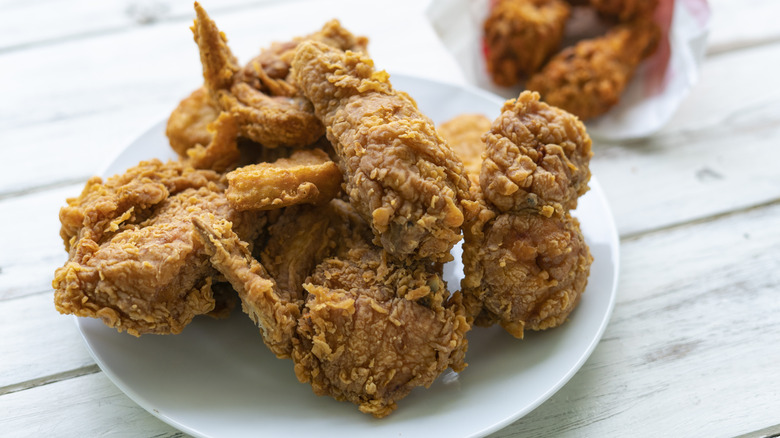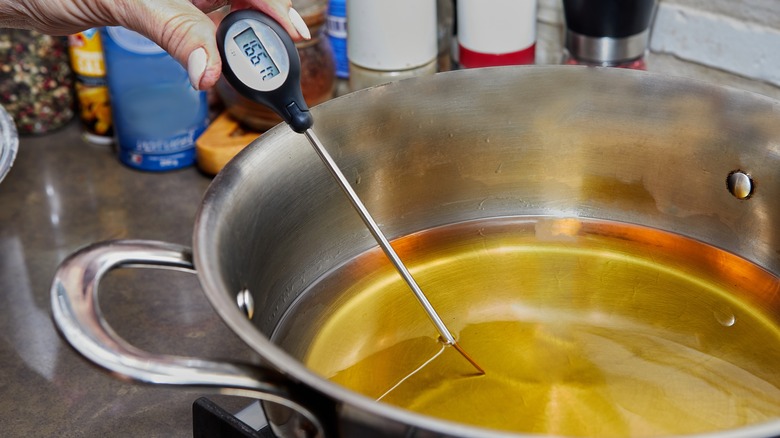How Oil Could Be Ruining Your Fried Chicken
Fried chicken may seem simple. However, those who've made it know how deceptively difficult it can be to create a quality meal with great flavor, crispy texture, and even cooking. Although many spend their time finessing their preparation or coating recipe, one of the most critical aspects of the process is also one of the most overlooked: the oil. That's why we consulted Bob Bennett, head chef at Zingerman's Roadhouse, to learn how your oil mistakes might be ruining your chicken and get some advice on how to avoid them.
The first step happens at the grocery store. Bennett says it's vital to pick the correct oil because using the wrong one is among the most common ways you're screwing up your fried chicken. "We use canola oil in the restaurant," he says, "but any vegetable oil works. I would stay away from oils that have a stronger flavor, like olive oil."
This decision is about more than just avoiding unwanted flavors in your chicken. Canola and vegetable oils have some of the highest smoke points of any oils — 400 degrees Fahrenheit or higher — which keeps them from burning during the frying process and imparting unpleasant tastes. On the other hand, olive oil can hit its smoke point at as low as 325 degrees.
Lower oil temperatures means more consistent cooking
In any case, Bob Bennett also recommends cooking fried chicken slightly differently than many other chefs, employing a modification that helps prevent a common frying issue. "I think one of the biggest mistakes is cooking chicken too fast, where [the] cooking oil gets too hot and the outside of the chicken cooks before the inside," Bennett says. This can be an extremely frustrating and difficult error to fix, as it may not be apparent until after you've sunk your teeth into the first seemingly well-cooked piece.
That's why he only heats his oil to 300 degrees, noticeably lower than the 350 to375 degrees Fahrenheit often recommended, in addition to using adequate oil and a large enough vessel to avoid crowding. "These details are super important to be able to cook the chicken all the way through and give the oil enough space to do its work," Bennett notes.
So, the next time you're about to whip up a batch of homemade crispy fried chicken, remember these vital factors before the frying begins. When you cook like the experts, your fried chicken tastes like it.

